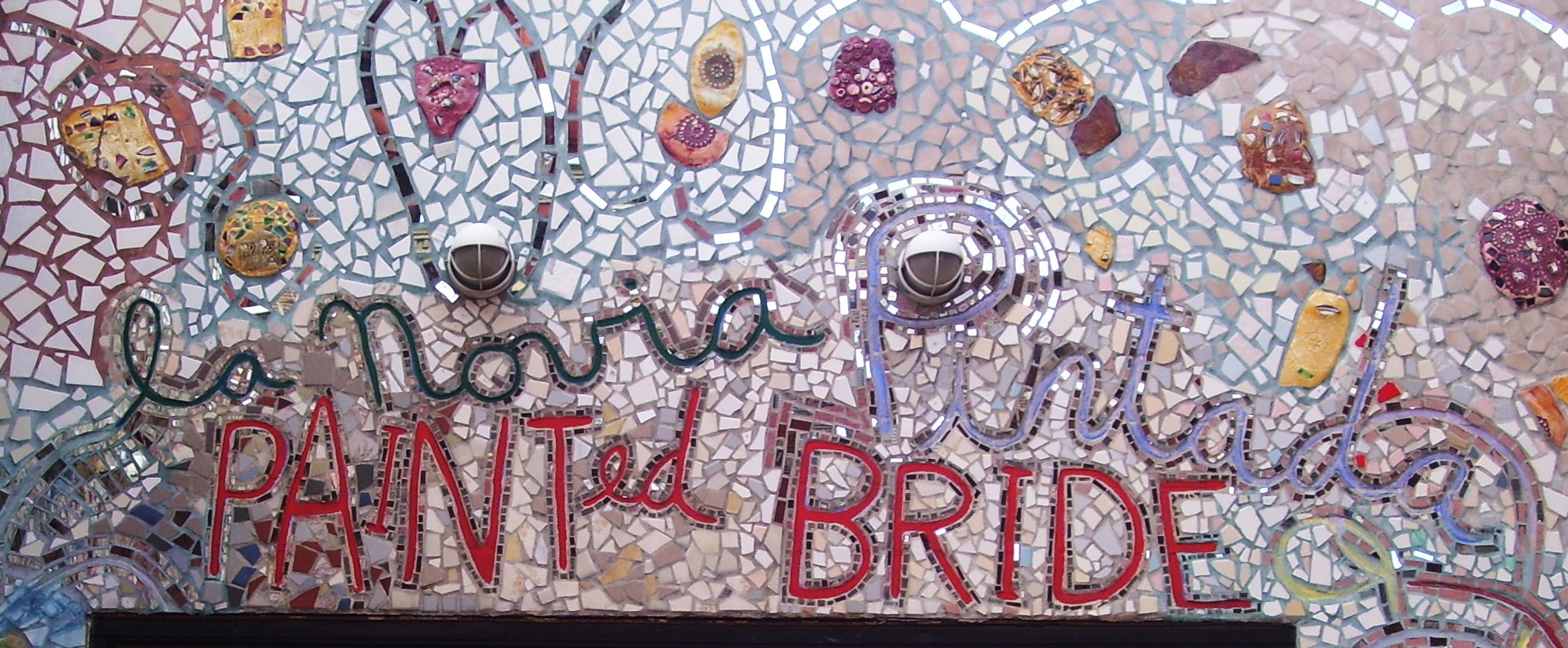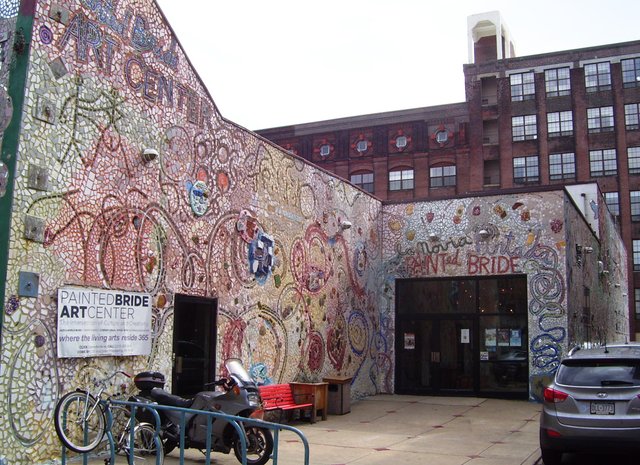Painted Bride On the Cusp

Like Alice following the hare down the rabbit hole, I followed the tabla playing accountant to the mysterious new world. It was 1998, and I was a recent college graduate who took a random workshop in percussion and spirituality in the Catskills taught by the Musical Director of the Painted Bride. Accountant Jewbu by day, master tabla player by night, Lenny Seidman opened the passage leading to a magical new world.
The world of non-profit arts organizations.
For two years I worked at the Painted Bride Arts Center, a non-profit performing arts space and gallery located in Old City, Philadelphia.

Image from the Painted Bride Arts Center, 230 Vine St, Philadelphia, Pennsylvania, United States. Wikipedia photo taken by User: Beyond my Ken, 9 March 2012. (Accessed 2/6/18)
The organization was founded in 1969 by Gerry Givnish as an “alternative” space for a group of visual artists who wanted to show their work. These resourceful artists rented a storefront Bridal shop on South Street and made their own futures happen. Next came the musicians, poets, dancers and theater artists. By the time I made it to The Bride, its founder was on the cusp of retirement, and the arts space was contending with the fierce competition of all the coffee houses popping up across town. Philly Fringe Festival founder, Nick Stuccio worked in the the office that was a proto-coworking space for artists before the term or concept existed. I worked as the development intern and box office assistant and got schooled in all things related to non-profit arts management. I met professional mentors that I still interact with and belly dancing lawyers.
I said, “Yes Boss!” to Ursula Rucker, working alongside our town’s premiere poetess who gave me a front row seat of what progressive hip-hop and electronica sounded like. Here’s Ursula, performing "Philadelphia Child" at the dedication of the mural made in her honor:
"...the Bride hasn’t just transformed arts in Philly: it’s changed whole neighborhoods. First, it led the South Street Renaissance, and defeated the city’s plan to put a cross town expressway on South Street. In its new permanent home at 230 Vine St, it led the rebirth of yet another dense and downtrodden neighborhood into a vibrant urban cultural center."
Excerpt from: http://themightyengine.com/blog-articles/where-would-philadelphia-be-without-the-bride/ (Accessed 2/6/18)
However, the most important thing I learned from my time at the Painted Bride was the notion of art as a service. Just like we need electricity, heat, and water to live. We need art. And once we understand that concept, it changes the non-profit paradigm of grantmaking and fundraising, which in turn, affects the operations of non-profit organizations. As mission driven institutions, each with their own values and stories, non-profit arts organizations stand to benefit in particular to the narrative monetizing prospects of Steemit.
The new school of funding for the 21st century non-profit is coming into focus. Not so coincidentally, the Painted Bride recently announced that they will be selling the Zagar-covered building that houses the Painted Bride offices, gallery, theatre and flexspace. Bought for measly $350,000 and no valued at 2.9 million, The Bride is shedding the old paradigm of bricks and mortar art programing and going more nimble. The third place concept popularized in the gentrifying boom of the late 1990s is now digital. The Bride is poised more than most arts organizations to win big in this new wild west terrain. In the coming weeks I will offer some ideas about how the Painted Bride can make use of that impending nest egg of cash by using new technologies and revenue streams.
I’ll also share some of my favorite exhibitions and performances sponsored by The Bride to give a taste of the amazing and valuable work that they have spearheaded over the years. Feel free in the comments to share some of your favorite Painted Bride experiences as well.
SPOKENHAND ORCHESTRA:
Notes
Front image detail from the Painted Bride Arts Center, 230 Vine St, Philadelphia, Pennsylvania, United States. Wikipedia photo taken by User: Beyond my Ken, 9 March 2012. (Accessed 2/6/18)
[]
100% of the SBD rewards from this #explore1918 post will support the Philadelphia History Initiative @phillyhistory. This crypto-experiment conducted by graduate courses at Temple University's Center for Public History and MLA Program, is exploring history and empowering education. Click here to learn more.
A monologue by Spalding Gray about his house in upstate NY (I think) close to 30 years ago was memorable as can be: powerful, innovative, intimate and in the moment.
Nice post. I think the Painted Bride was where I saw a cat circus several years ago.
very-very good picture ok I've vote.jangan forgot vote back